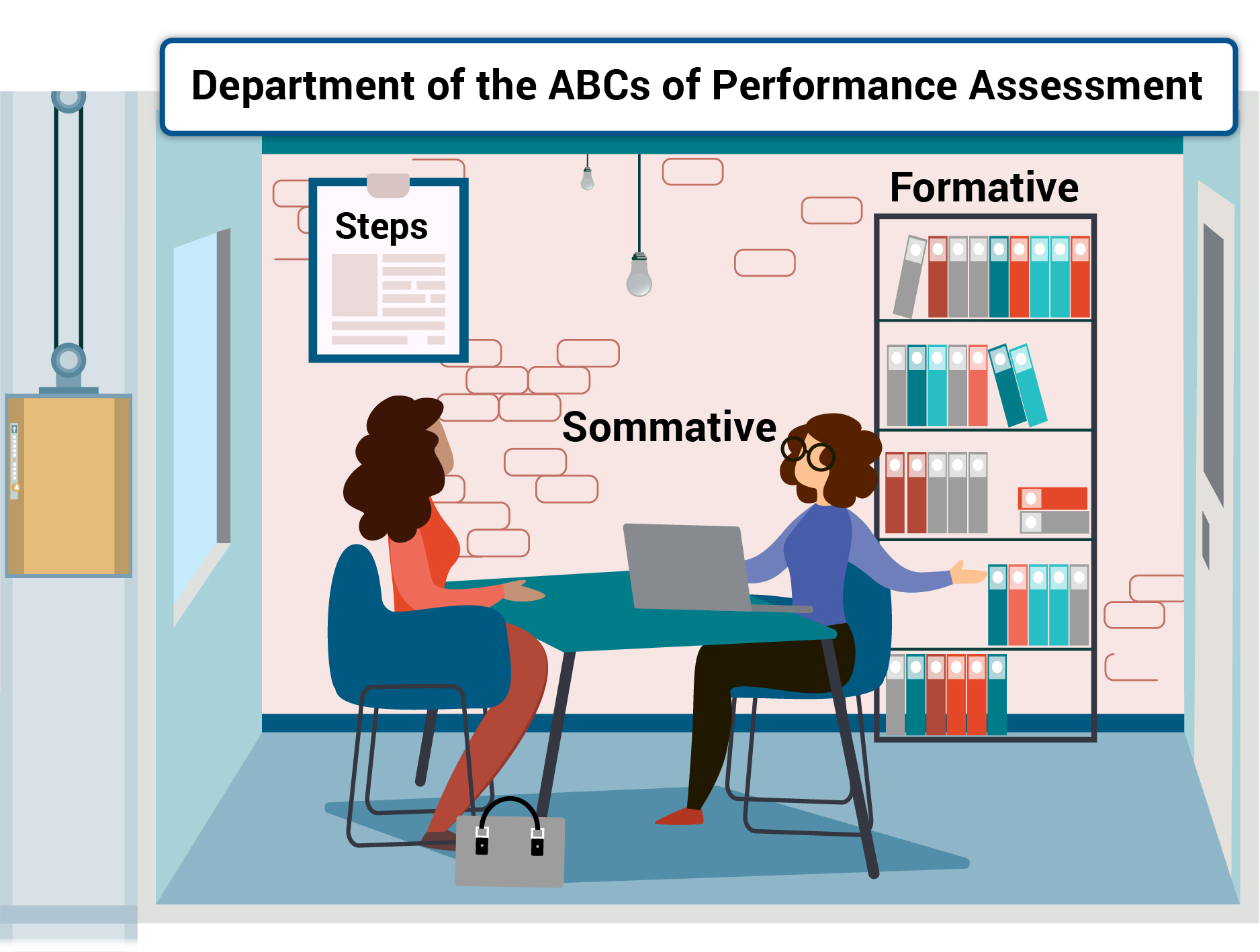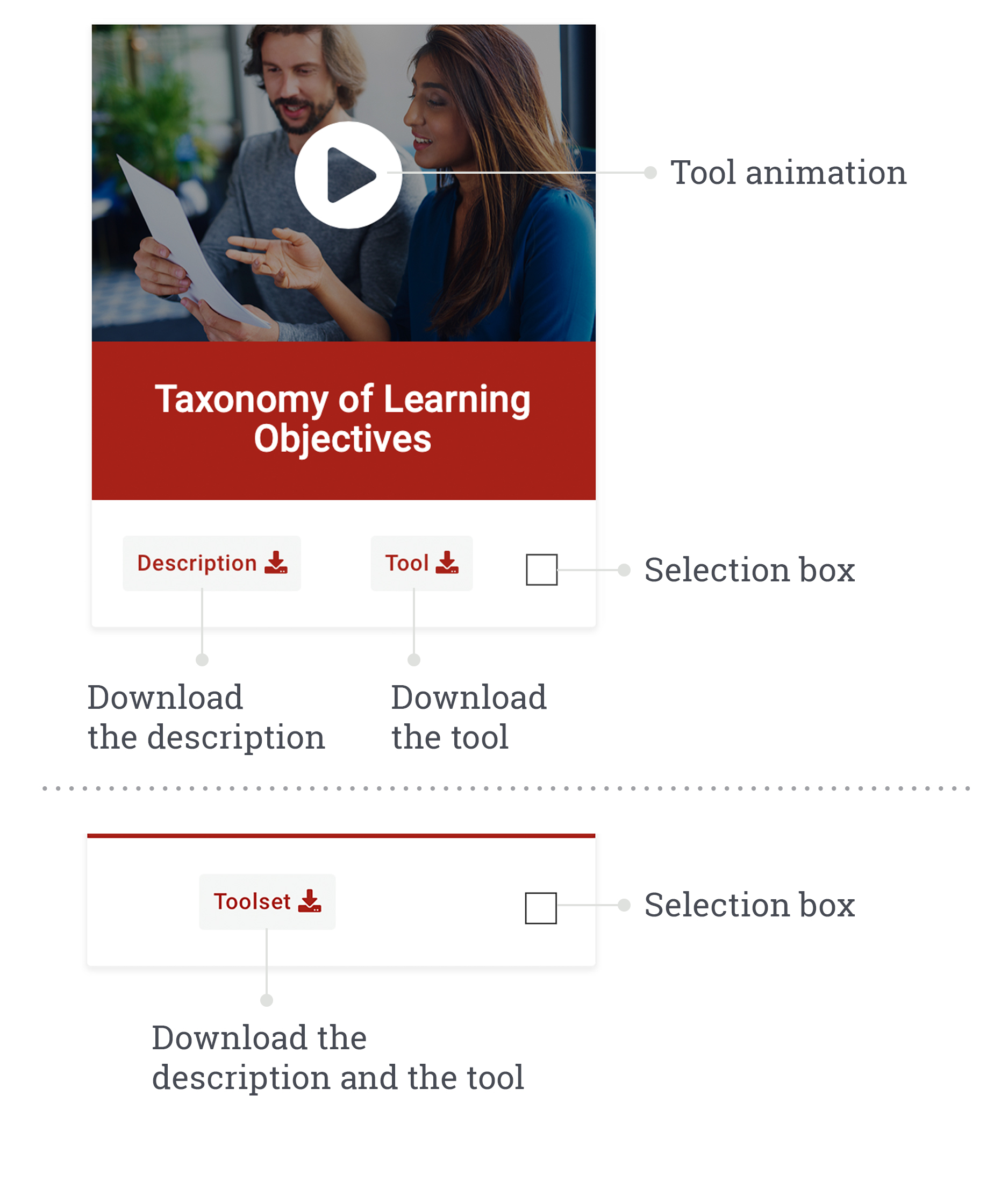Memories are pervasive and interfere with how assessment is perceived. As it were, your viewpoint on assessment reflects the emotions you feel and it is with this history that you approach the assessment process. Literature reveals that many still dread assessments because of bad memories. In addition, it is perceived as the most stressful activity and the activity that triggers the greatest dissatisfaction in the supervisory process.
UNIT 1
The ABCs of performance assessment
Orientation to Unit 1
In this unit, you will be invited to reflect on performance assessment. You will discover its features and the five steps that guide the assessment process.
The ABCs of performance assessment
What is performance assessment?

In addition to being a key professional skill, performance assessment is one of the main functions of supervision and it is part of the daily work of any supervisor. It is essential to the learning process and central to ensuring successful practical training.
Then again, what is performance assessment exactly? Multiple definitions share common elements that we will summarize as follows:
It is a process whereby information is collected about the trainee’s learnings, through multiple and diversified sources. Assessment brings to light the trainee’s competencies and how well he masters internal and external resources that can be mobilized. It also leads to a verdict on the trainee’s performance, based on valid and legitimate information.
Performance assessment "What For"?
You will note that instead of asking the question why, we ask the question using two words: What For.


The expression What For written in this way implies looking forward (What for? What will we do with…?), while the word why (Why? For what reasons…?) looks to the past to explain the present.
With regards to performance assessment, we want to look forward, capturing what this process will lead us to accomplish. In that sense, the purpose of assessment is to inform and support the trainee, then to decide on actions that need to be taken.
Many reasons justify assessing trainees’ performance. For instance, an assessment will:
- Add value to the trainee’s placement experience. When an assessment is conducted constructively, the trainee’s placement experience is enhanced. The trainee realizes his progress and values his placement.
- Improve the trainee’s learning process. In addition to increasing the trainee’s motivation, the assessment:
- Guides the trainee through his learning by revealing what is mastered and what remains to be developed
- Promotes the trainee’s self-reflection
- Empowers the trainee as a self-directed learner
- Measure the trainee’s knowledge and skills, subsequently informing the academic setting. By conducting an assessment, the supervisor can determine the trainee’s level of competence and quickly detect major difficulties as they appear.
- Foster the supervisor’s professional development. Indeed, a supervisor acquires new skills when training a student. For example, he develops his knowledge on learning theories and improves his skills in terms of feedback. In fact, the supervisor can also learn from his trainee when he also assesses his supervisor.
- Ensure the quality of care provided to patients. The supervisor must ensure that care provided by a trainee is well executed. In addition, supervisors are sometimes referred to as gatekeepers for the profession. The assessment conducted by a supervisor is used in several high-stakes contexts because it leads to professional certification.
The assessment process plays a crucial role in a trainee’s journey, in addition to impacting the supervisor’s skills and the quality of care provided to patients.
Two types of assessments
As you just saw, assessments serve multiple purposes. However, they can vary according to the type of assessment. There are several types of performance assessments. For this workshop, we will focus on the two types of assessments that are most frequently used in the context of placements: formative assessment and summative assessment. The following analogy will allow you to draw an initial distinction:
An athlete has a coach who evaluates him continuously to ensure progress towards his personal objective. During competitions, the athlete is assessed by a judge who assigns marks.


As for a student, he has a supervisor who guides his learnings throughout the placement and gives him marks at the very end. Therefore, the supervisor assumes two responsibilities when he conducts a formative assessment (coach) and a summative assessment (judge).
assignment Drawing distinctions between formative and summative assessments
Discover formative and sommative assessments by using the following table.
info_outline Instructions:
- Read the following statements to learn the characteristics associated with each type of assessment.
- Draw distinctions between formative and summative assessments.
- Click on the button of your choice.
- Feedback will appear immediately.
| Formative assessment FOR learning | Summative assessment OF learning | |
|---|---|---|
| Moment : | ||
| Mid-placement and/or end-of-placement |
|
|
| Ongoing, frequently or at mid-placement |
|
|
| Formality: | ||
| Informal |
|
|
| Formal |
|
|
| Description : | ||
| Process encompassing all activities that provide information on the trainee’s learning (including questioning him on his perception of the situation) that facilitates the development of his competencies by highlighting his strengths and his challenges |
|
|
| Overview summing up the trainee’s progress, comparing it against criteria determined by the academic setting |
|
|
| Goals: | ||
|
|
|
|
|
|
| Purpose of the assessment: | ||
| Draw a picture of the trainee’s overall performance, regarding a series of activities |
|
|
| Focuses on a specific activity (e.g. meeting a patient) or a set of situations (e.g. review of interventions accomplished during the week) |
|
|
| Results : | ||
|
|
|
|
|
|
| Other relevant information: | ||
|
|
|
|
|
|
References
Download the printable version: Two types of assessments (.pdf, 249 Ko).
A dreaded but mandatory activity!
Reflection questions
info_outline Instructions:
- Answer the following questions in the textbox below.
- Click on “Save” to keep your answers.
- What recollections do you have of the performance assessments you experienced? Describe a positive and negative memory.
- Do you dread having to assess your trainees? Why?
Indeed, many obstacles can lead a supervisor to put off performance assessment:
info_outline Instructions: To explore these obstacles, click on each of the images below.








Lack of time is an obstacle identified by almost all supervisors. Health professionals already have very busy schedules, to which they add supervising a trainee and assessing his performance. Assessment is a complex process that requires some preparation, in addition to the time needed to meet with the trainee. Furthermore, some placements being very short, it is difficult to collect enough information to conduct a fair assessment of the trainee.

Lack of training is also an obstacle that is shared by a majority of supervisors. They may feel they are ill-equipped and lack self-confidence in their ability to conduct a constructive and effective assessment.

The subjective nature of an assessment also creates reservations. A supervisor may worry about being blamed for too much subjectivity or a trainee may perceive the assessment as a personal attack. Various biases in performance assessment, as well as strategies to overcome them, will be addressed in Unit 4.

The trainee’s reaction can cause concerns for the supervisor. In fact, the assessment can provoke anxiety for the trainee. He may be reticent to accept the comments he receives and become defensive, angry or emotional.

It may be that the supervisor does not have enough support from the academic setting when the trainee is facing failure or when he needs to inform the trainee that he does not master the required knowledge to function independently.

The supervisor may fear that the assessment will be perceived as reflecting the quality of supervision. A trainee receiving a bad assessment would mean that the supervision was of poor quality. Thus, the supervisor is concerned that his own assessment is affected.

The supervisor may feel that the assessment is counter to his supporting role. Having established a supporting relationship with the trainee along the placement, the supervisor may feel uncomfortable with the notion of power that is conveyed to him because of his role as an assessor.
Despite these obstacles, to maintain a positive outlook of your role as an assessor:
- Remember that you are first and foremost a human being, who can make mistakes and who has personal limits, even as a supervisor.
- Find the tools that will allow you to acquire assessment skills, for example through training such as this one. This could help you avoid most of the obstacles discussed above.
The five steps of assessment
We have mentioned that performance assessment takes stock of the trainee’s learnings. It is a complex process, often difficult to organize, and supervisors do not always know where to begin. We propose a structure in five steps, adapted from literature, that will assist you in mitigating the obstacles that you have just seen.
You will explore the five steps in the following units.
Key concepts
Following are the main concepts to remember in order to gain a better understanding of performance assessment in the context of placements.
- Performance assessment is a process that leads to a verdict on the trainee’s performance, based on valid and legitimate information.
- The assessment process plays a crucial role in the trainee’s journey, and it also has an impact on your skills as a supervisor and on the quality of care provided to patients.
- We reviewed two types of assessment:
- The formative assessment, which promotes the development of the trainee’s competencies, by highlighting his strengths and challenges and by planning strategies to alleviate these challenges.
- The summative assessment, which consists in an overview and summing up of the trainee’s progress, comparing it against criteria established by the academic setting.
- The assessment process includes five steps:
- Planning
- Collecting information on the trainee’s behaviours
- Interpreting the information
- Communicating appreciations to the trainee (feedback)
- Decision-making




